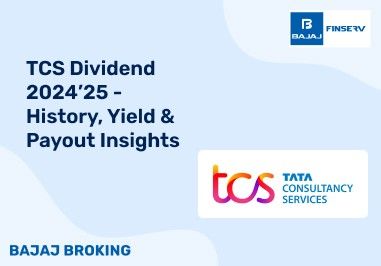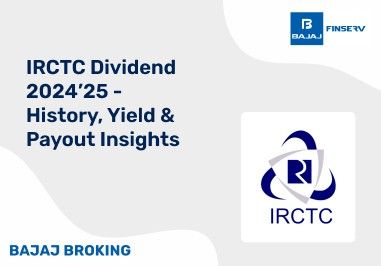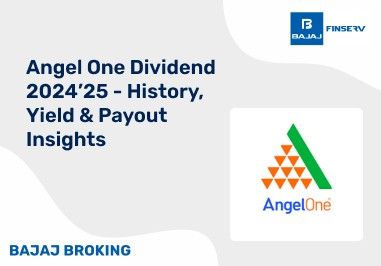A secondary offering occurs when existing shareholders sell a substantial number of shares to the public, typically through stock exchanges. Unlike a primary offering, where a company issues new shares to raise capital, a secondary offering does not generate new funds for the company. Instead, it facilitates the transfer of ownership between investors in the secondary market. These offerings can impact stock supply, market perception, and trading volumes. Investors should analyze their implications carefully, as they can influence price movements, liquidity, and broader market sentiment.
What is a Secondary Offering?
A secondary offering occurs when an investor sells their existing shares to the general public through the secondary market. Unlike an Initial Public Offering (IPO), where a company issues new shares to raise capital, a secondary offering involves shares that have already been issued and are now being resold by stockholders. In such cases, the company does not receive any proceeds from the sale—only the selling shareholders benefit.
Some companies may conduct follow-on offerings, which are sometimes referred to as secondary offerings. These can be classified into two types: non-dilutive secondary offerings, where existing shares change hands without affecting the company’s share structure, and dilutive secondary offerings, where new shares are issued, potentially impacting the ownership percentage of existing shareholders.
Primary vs. Secondary Market
Feature
| Primary Market
| Secondary Market
|
Definition
| Where new securities are issued for the first time
| Where existing securities are traded among investors
|
Seller
| Company issuing the security
| Investors or stakeholders
|
Fund Flow
| Proceeds go to the issuing company
| Proceeds go to the selling investor
|
Examples
| IPO, Follow-on Public Offer (FPO)
| Stock exchanges, over-the-counter (OTC) trades
|
Secondary Offering vs. Follow-On Offering
Feature
| Secondary Offering
| Follow-On Offering
|
Issued By
| Existing shareholders or the company
| Only the company
|
Share Type
| Existing shares already issued
| New shares issued by the company
|
Impact on Ownership
| May or may not dilute ownership
| Always dilutes existing ownership
|
Fund Utilization
| Proceeds go to selling shareholders
| Proceeds are used for business growth, expansion, or debt repayment
|
How Do Secondary Offerings Work?
When a private company decides to raise capital, it may issue new shares through an Initial Public Offering (IPO). During this process, shares are allotted to investors in the primary market, and the company receives the proceeds to fund operations, acquisitions, or other business needs. Investors who participate in the IPO can check their IPO allotment status to confirm the number of shares allocated to them.
Once the IPO is completed, the shares start trading on the secondary market, allowing investors to buy and sell them freely. A secondary offering occurs when an existing shareholder—such as an early investor, venture capitalist, or institutional holder—sells their shares to the public. These transactions take place on stock exchanges, and unlike a current IPO, the company does not receive any proceeds from the sale. Instead, the funds go directly to the selling shareholder, redistributing ownership without increasing the company’s total share count.
Types of Secondary Offerings
Secondary offerings are classified into two types: non-dilutive secondary offerings and dilutive secondary offerings. Each type has a different impact on existing shareholders, company valuation, and market sentiment.
Non-dilutive secondary offering
A non-dilutive secondary offering involves the sale of shares already held by existing shareholders, such as company executives, venture capitalists, or institutional investors. Since no new shares are created, this type of offering does not change the company’s total share count or directly benefit the issuing company. Investors may sell shares to rebalance portfolios, exit investments, or realize profits.
While non-dilutive secondary offerings may temporarily cause a dip in the company's stock price due to increased supply, they typically recover if market sentiment remains positive and investors have confidence in the company’s long-term growth potential.
Dilutive secondary offering
A dilutive secondary offering, also known as a follow-on public offering (FPO), occurs when a company issues additional shares to raise capital. Unlike non-dilutive offerings, this increases the total number of outstanding shares, leading to a potential decrease in earnings per share (EPS) and dilution of existing shareholders’ ownership.
Companies opt for dilutive secondary offerings to fund expansion, enter new markets, or reduce debt. While it provides additional capital, it may lower stock value, making it less favorable for current investors. However, if the raised capital leads to future growth, the stock price may stabilize or increase over time.
How Secondary Offerings Differ from Initial Public Offerings (IPOs)?
A secondary offering and an Initial Public Offering (IPO) serve different purposes in the stock market. An IPO is the first time a company issues shares to the public, allowing it to raise capital for expansion, research, debt repayment, or operational needs. These newly issued shares are sold in the primary market, and the proceeds go directly to the company. Investors interested in an upcoming IPO or a current IPO can apply for shares through their trading account online before they start trading on the stock exchange.
In contrast, a secondary offering takes place after an IPO and involves the sale of already-issued shares. These shares are sold by existing shareholders—such as early investors, company executives, or venture capitalists—rather than the company itself. Since no new shares are created in a non-dilutive secondary offering, the total outstanding share count remains unchanged, and the company does not receive any proceeds. However, in a dilutive secondary offering, new shares are issued, increasing share supply and potentially impacting stock value and earnings per share (EPS).
The Impact of a Secondary Offering
A secondary offering can have mixed impacts on stock prices and investor sentiment. A non-dilutive offering often has little effect on stock value, as shares are simply changing hands. However, a dilutive offering can lead to a drop in EPS, affecting investor confidence and potentially causing stock prices to decline. Market reaction depends on the reason behind the offering and how investors perceive its impact on company growth.
Market Sentiment Toward Secondary Offerings
Market sentiment toward secondary offerings depends on various factors, including the company’s financial position, the reason for the offering, and broader market conditions. Investors often react cautiously to non-dilutive secondary offerings, especially when major shareholders—such as founders or institutional investors—sell large stakes. This may indicate a potential lack of confidence in the company’s future, leading to temporary price drops. However, if demand remains strong and fundamentals are intact, stock prices can recover quickly.
Dilutive secondary offerings, or follow-on public offerings (FPOs), typically face initial resistance as they increase the total number of outstanding shares, reducing earnings per share (EPS). However, if the company uses the raised capital efficiently—such as for expansion, acquisitions, or debt reduction—investors may respond positively in the long term. Traders using Margin Trading Facility (MTF) may also see opportunities in price fluctuations, leveraging borrowed funds to take advantage of short-term volatility in secondary offerings.
Additionally, market conditions play a key role. In a bullish market, secondary offerings may be viewed as buying opportunities, while in bearish conditions, investors may be more skeptical, leading to higher volatility. Regardless, thorough analysis of the company’s financial health and purpose behind the offering is essential before making investment decisions.
Benefits and Risks of Participating in a Secondary Offering
Benefits:
- Increased Liquidity: Secondary offerings improve liquidity, allowing investors to buy or sell shares more easily.
- Potential for Lower Prices: Investors may acquire shares at a discount compared to market prices.
- Opportunity for Institutional Participation: Large funds and institutions often participate, indicating confidence in the company.
- No Direct Dilution (Non-Dilutive Offering): No impact on EPS or ownership structure.
Risks:
- Stock Price Volatility: Prices may drop if the market perceives the offering negatively.
- Dilution Risk (Dilutive Offering): Existing shareholders' ownership and earnings per share may be reduced.
- Uncertainty About Company Intentions: If insiders sell large amounts of stock, it may signal reduced confidence in the company’s future.
- Impact on Demand and Supply: A large number of shares entering the market can create short-term supply pressure.
How to Analyse a Secondary Offering: Key Considerations
Here’s a list of key considerations you can use to analyse secondary offerings:
- Purpose of the Offering: Determine if the offering is for growth, debt reduction, or insiders cashing out.
- Impact on Share Price: Assess how the offering may affect earnings per share and stock valuation.
- Investor Sentiment: Analyze market reaction and institutional participation in the offering.
- Financial Health of the Company: Consider profitability, revenue growth, and debt levels before investing.
- Type of Offering: Differentiate between dilutive and non-dilutive offerings to gauge potential risk.
- Lock-In Period for Insiders: If insiders are selling large stakes, it may indicate their outlook on the company’s future performance
Secondary Offering Example
One of the most notable non-dilutive secondary offerings occurred in 2013, when Mark Zuckerberg, the founder and executive of Meta (formerly Facebook), announced the sale of 41,350,000 shares he personally held. The shares were sold to the public at a price of $55.05 per share, generating approximately $2.3 billion. Since these were existing shares already issued, the offering did not result in the creation of new shares, meaning it had no direct impact on the company’s equity structure. Zuckerberg stated that a portion of the proceeds was used to cover a tax bill.
Conclusion
Secondary offerings allow companies and major shareholders to monetize their holdings, but they can impact stock prices differently. Non-dilutive offerings may raise concerns about insider confidence, while dilutive offerings can lower stock value due to increased share supply. Investors should carefully evaluate these offerings, considering factors like market conditions and company performance.
Do you have a trading account app or demat account app?
You can open an account with Bajaj Broking in minutes.
Download the Bajaj Broking app now from Play Store or App Store.
Disclaimer: Investments in the securities market are subject to market risk, read all related documents carefully before investing.
This content is for educational purposes only. Securities quoted are exemplary and not recommendatory.
For All Disclaimers Click Here: https://www.bajajbroking.in/disclaimer













